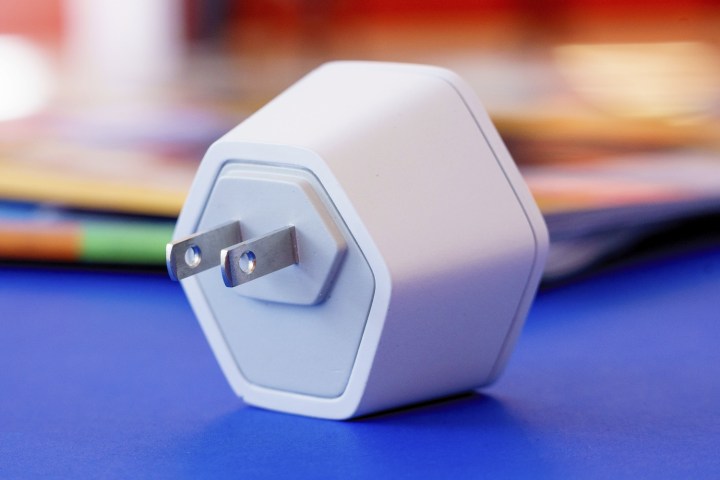
After an initial launch in Boston and Chicago at the end of 2017, Comcast’s Xfi Pods are now available to all Xfinity internet subscribers in a three-pack for $119, or a six-pack for $199. They’re compatible with the company’s Xfi Wireless Gateway and the Xfi Advanced Gateway, extending the reach of your wireless network in the home or office.
“Our gateway devices are incredibly powerful, but we know that some homes have a unique layout or are constructed of materials that can disrupt Wi-Fi coverage in some rooms,” Eric Schaefer, Senior Vice President, Comcast Cable, said in a statement. “Our Xfi Pods can blanket a home with great coverage and are simple to install and easy to use.”
The Xfi Pods are AC1200-class devices, meaning they support speeds of up to 300Mbps on the 2.4GHz band (2x 150Mbps) and up to 867Mbps on the 5GHz band (2x 433Mbps). They plug directly into a wall’s power outlet to create a “mesh” network: A web of coverage that shows up on your device as a single access point no matter where you are in the home or office.
The hexagon-shaped Xfi Pods are the result of a collaboration between Comcast and mesh networking kit developer Plume. The Plume Wi-Fi system relies on what the company calls “Adaptive Wi-Fi” that is a bit different than the typical mesh networking kit. That is because it uses a feature called Auto Channel Hop, allowing data to “hop” from one transmission lane to another to avoid any congestion routed between the gateway, the Xfi Pods, and your device.
Another difference between your typical mesh networking kit and the Xfi Pods is that they don’t physically connect to the gateway via an Ethernet connection. Instead, the unit serving as the “hub” connects wirelessly to the gateway with the others serving as “nodes” to create a web of connectivity. Thus, the included Ethernet port merely connects a wired device to the network.
Comcast says these mesh devices will “evaluate” the environment and adjust the channels. They “self-monitor” their performance as well, diagnose all issues, and repair the connections between each Pod. They are powered by cloud-based remote management, meaning you can install, monitor and control these devices using a mobile app for iOS and Android.
“Pods are not meant for outdoor use and should not be placed outside of your home,” the company FAQ states. “To extend Wi-Fi coverage to an outdoor location, place one of your Pods in an inside wall outlet that is closest to the outdoor area where you would like to extend Wi-Fi coverage.”
Mesh networking kits complement your current gateway. Picture a radio tower: The further you move away, the fuzzier the music becomes until all you hear is static. Wi-Fi is similar, but adding a mesh network “extends” the coverage so your data transmissions remain fast and solid. Not every Xfinity subscriber will need this kit, such as small studio apartments.
The new Xfi Pods are available to purchase online, at any Xfinity retail store, or within the Xfi app.


